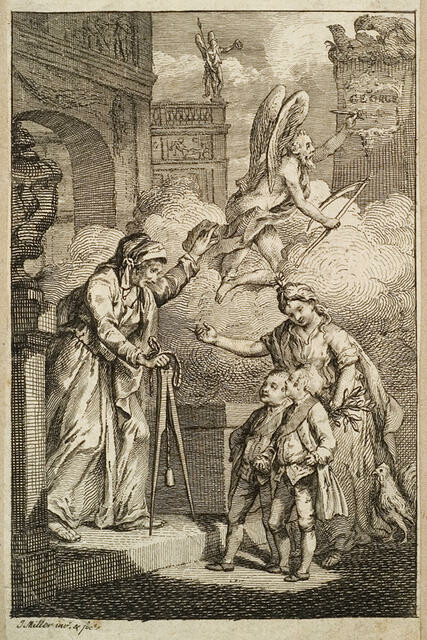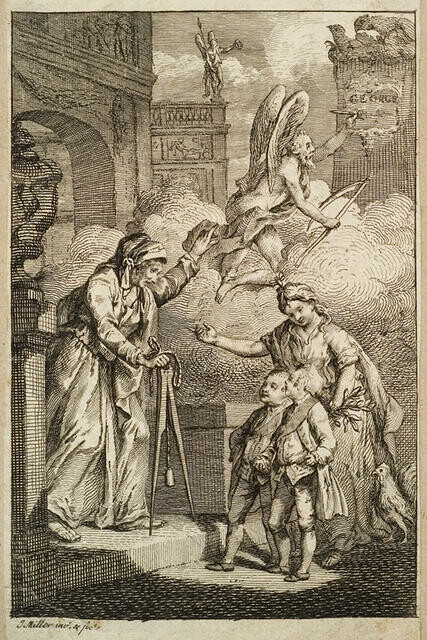Tobias Miller
British, active 1765-1790
Frontispiece to 'Fables Amusantes'
- 1771
- Etching
- Sir Joseph Kinsey bequest
- 141 x 81mm
- 72/79
Tags: animals, arches, birds (animals), boys, children (people by age group), clouds, compasses (drawing instruments), cross-hatching, kings (people), monochrome, people (agents), princes (rulers), scythes, statues, words, writing (processes)
This print is the frontispiece for the 1771 edition of 'Fables amusantes' by John Perrin. French born Perrin moved to Ireland and became an itinerant tutor of the French language and a prolific writer of books for learners of French. Fables amusantes was his own re-writing of the fables of Æsop and La Fontaine, written in very simple French, with explanatory notes and a glossary. It went through numerous editions and was still in print as late as 1870.
The frontispiece has nothing to do with the content of the book, but instead makes reference to the dedication. This is made in typically florid language to George, Prince of Wales, the later George IV (1762-1830). It concludes:
'May your Royal Highness live to imitate the character of your royal father, in all those virtues that shine so conspicuous in him!'
The frontispiece serves therefore to illustrate the dedication. George, Prince of Wales and his brother Frederick, Duke of York, are escorted by a figure representing Peace (with olive branch) towards a triumphal arch, where a woman with dividers prepares to measure them against their glorious father. Father Time (with beard, wings and scythe) inscribes the name, George, on a pedestal where eagles have nested.
In 1771 when the book was first published, the Prince of Wales would have been about eleven and the Duke of York (later famous in song for having gone up and down hills) about eight. Their father, George III, had yet to suffer the humiliation of the loss of the American colonies while the triumphs of the Seven Years War (1756-63) would still have been a recent memory. We assume the pedestal will one day bear a statue of either King George the father whose exploits are known, or Prince George the son who may, or may not, measure up to his father.
Tobias Miller the engraver was born Tobias Müller in Nuremberg and came to England with his better known brother Johann Sebastian Müller, later John Miller, in the mid 1740s. There are many known examples of Tobias Miller's architectural engravings.

